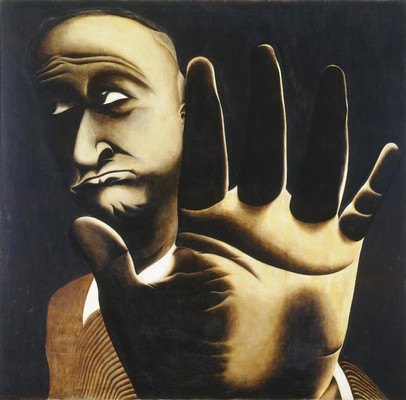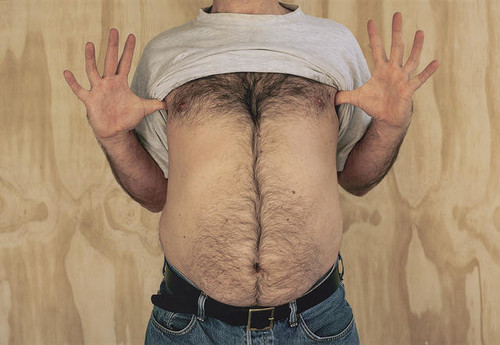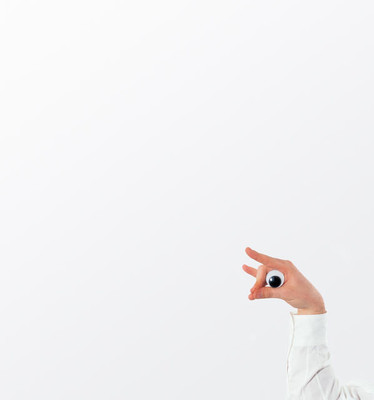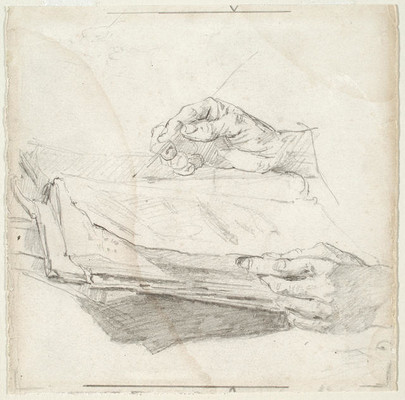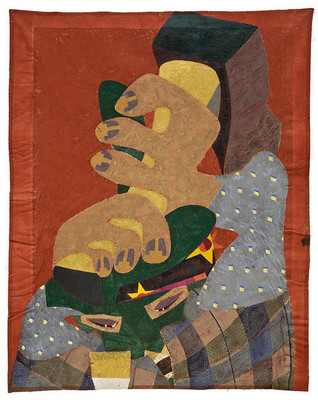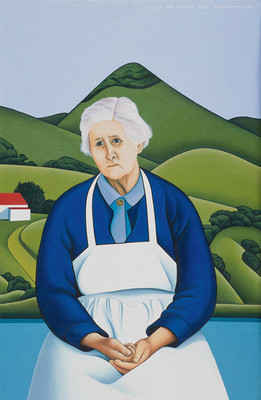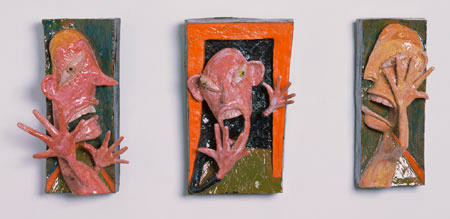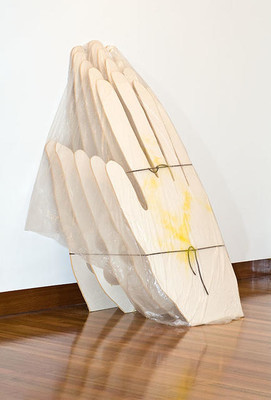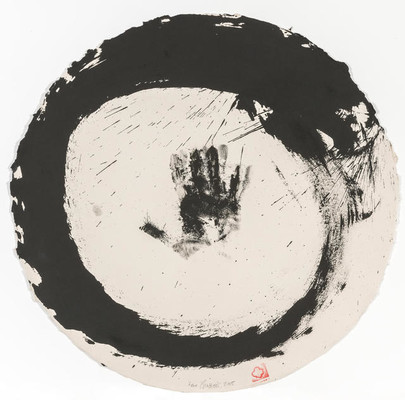B.
Return of the Hand
Behind the scenes
Passing by the desk of Gallery educator Bianca van Leeuwen last week, I was intrigued by an arrangement of plaster hands being prepared for an outreach classroom activity about composition and colour.
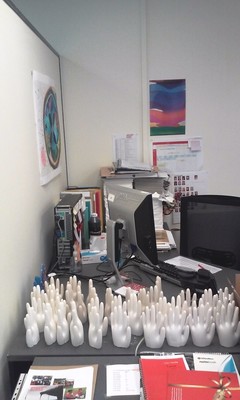
Plaster hands, CAG Education desk.
It got me thinking about how hands - notoriously tricky to get right - can be such a key element of a work of art, whether they are the direct focus of an artist's consideration or a more subtle guide to character or intention. Here are a few - you could even say a handful - of my favourite examples from the Gallery's collection.
First, perhaps our best known hand: Tony Fomison's No! (inspired by a newspaper photo Fomison saw while in England) where that pudgy, adamant hand is backed up by a pursed mouth and averted eyes. The best bit for me is how Fomison transforms the lines of the palm into undulating hills and valleys (à la Doris Lusk), lining them up with the furrows of the man's brow and the tight corrugations of his jersey.
Contemporary artists like Steve Carr also let their hands do the talking, whether they're drawing attention to a manly beer-belly (bear-belly?) as here, or creating a menagerie of other creatures.
Sometimes hands are the artist's primary focus, whether delicately wielding a pencil, as in this little sketch by Petrus van der Velden, or meatily clutching an axe in Philip Trusttum's Heavy Going.
In other works, however, the hands are just one element of a composition. Don't let that 'just' fool you though, as their form (graceful, rough, muscular) and shape (clenched, relaxed, gesturing) can allow an artist to convey a great deal. A case in point is Robin White's portrait of her mother, Florence, in which Florence's work-worn hands are rested (you always sense just for a moment) in her practical apron, creating an inverted traingle that mirrors the shape of Harbour Cone behind her. (I almost said, 'in a kind of primal feminine geometry' (the local nickname for Harbour Cone is Tit Hill, after all), but I stopped myself just in time. Phew.)
In Jimmy Cooper's ceramic triptych, A Spot of Infidelity, wildly starfishing hands act like hilarious exclamation marks to relay the emotions of a romantic triangle that has reached a dramatic, if predictable, denouement.
The five super-sized hands in Simon Denny's Of Course it Was are held apart with pale balloons. Leaned up against the wall and loosely covered with a sheet of plastic secured with rubber cords, they recall, in super-sized form, not only the hands of those depicted throughout the gallery spaces, but also the hands that made them.
The open palm as a statement of action and individuality is a recurring motif in Max Gimblett's works. Slapped with force onto a circule of handmade paper in the sound of one hand - 7 - 10/5/05, it is framed and intensified by a loosely painted enso - a shape drawn from Zen Buddhism and created in a single brushstroke that symbolises the moment when the mind is free to let the body create. You can see more works by Gimblett - and other hand-related works by other artists here.
